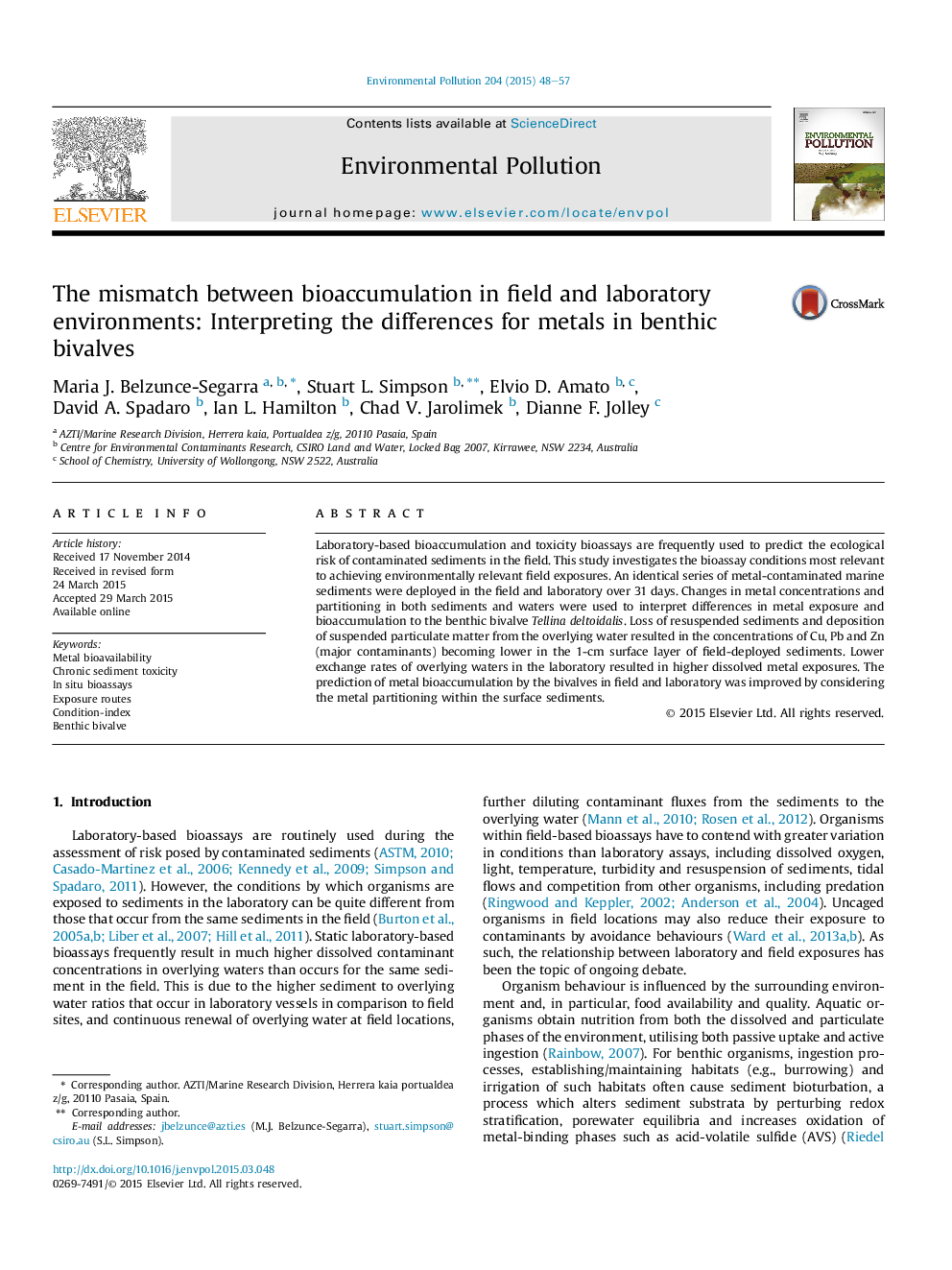| Article ID | Journal | Published Year | Pages | File Type |
|---|---|---|---|---|
| 6317172 | Environmental Pollution | 2015 | 10 Pages |
Abstract
Laboratory-based bioaccumulation and toxicity bioassays are frequently used to predict the ecological risk of contaminated sediments in the field. This study investigates the bioassay conditions most relevant to achieving environmentally relevant field exposures. An identical series of metal-contaminated marine sediments were deployed in the field and laboratory over 31 days. Changes in metal concentrations and partitioning in both sediments and waters were used to interpret differences in metal exposure and bioaccumulation to the benthic bivalve Tellina deltoidalis. Loss of resuspended sediments and deposition of suspended particulate matter from the overlying water resulted in the concentrations of Cu, Pb and Zn (major contaminants) becoming lower in the 1-cm surface layer of field-deployed sediments. Lower exchange rates of overlying waters in the laboratory resulted in higher dissolved metal exposures. The prediction of metal bioaccumulation by the bivalves in field and laboratory was improved by considering the metal partitioning within the surface sediments.
Related Topics
Life Sciences
Environmental Science
Environmental Chemistry
Authors
Maria J. Belzunce-Segarra, Stuart L. Simpson, Elvio D. Amato, David A. Spadaro, Ian L. Hamilton, Chad V. Jarolimek, Dianne F. Jolley,
